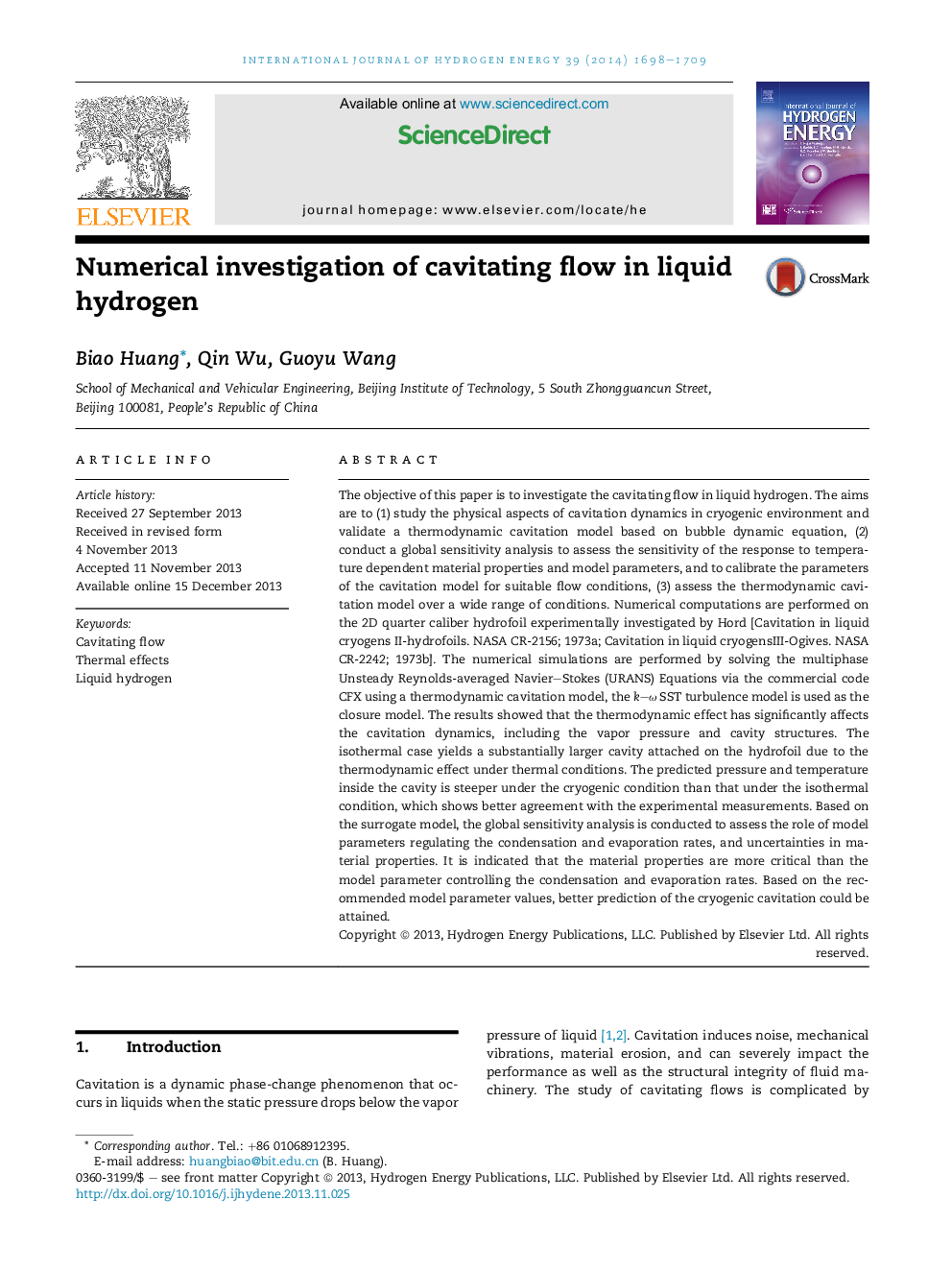| Article ID | Journal | Published Year | Pages | File Type |
|---|---|---|---|---|
| 7720773 | International Journal of Hydrogen Energy | 2014 | 12 Pages |
Abstract
The objective of this paper is to investigate the cavitating flow in liquid hydrogen. The aims are to (1) study the physical aspects of cavitation dynamics in cryogenic environment and validate a thermodynamic cavitation model based on bubble dynamic equation, (2) conduct a global sensitivity analysis to assess the sensitivity of the response to temperature dependent material properties and model parameters, and to calibrate the parameters of the cavitation model for suitable flow conditions, (3) assess the thermodynamic cavitation model over a wide range of conditions. Numerical computations are performed on the 2D quarter caliber hydrofoil experimentally investigated by Hord [Cavitation in liquid cryogens II-hydrofoils. NASA CR-2156; 1973a; Cavitation in liquid cryogensIII-Ogives. NASA CR-2242; 1973b]. The numerical simulations are performed by solving the multiphase Unsteady Reynolds-averaged Navier-Stokes (URANS) Equations via the commercial code CFX using a thermodynamic cavitation model, the k-Ï SST turbulence model is used as the closure model. The results showed that the thermodynamic effect has significantly affects the cavitation dynamics, including the vapor pressure and cavity structures. The isothermal case yields a substantially larger cavity attached on the hydrofoil due to the thermodynamic effect under thermal conditions. The predicted pressure and temperature inside the cavity is steeper under the cryogenic condition than that under the isothermal condition, which shows better agreement with the experimental measurements. Based on the surrogate model, the global sensitivity analysis is conducted to assess the role of model parameters regulating the condensation and evaporation rates, and uncertainties in material properties. It is indicated that the material properties are more critical than the model parameter controlling the condensation and evaporation rates. Based on the recommended model parameter values, better prediction of the cryogenic cavitation could be attained.
Related Topics
Physical Sciences and Engineering
Chemistry
Electrochemistry
Authors
Biao Huang, Qin Wu, Guoyu Wang,
